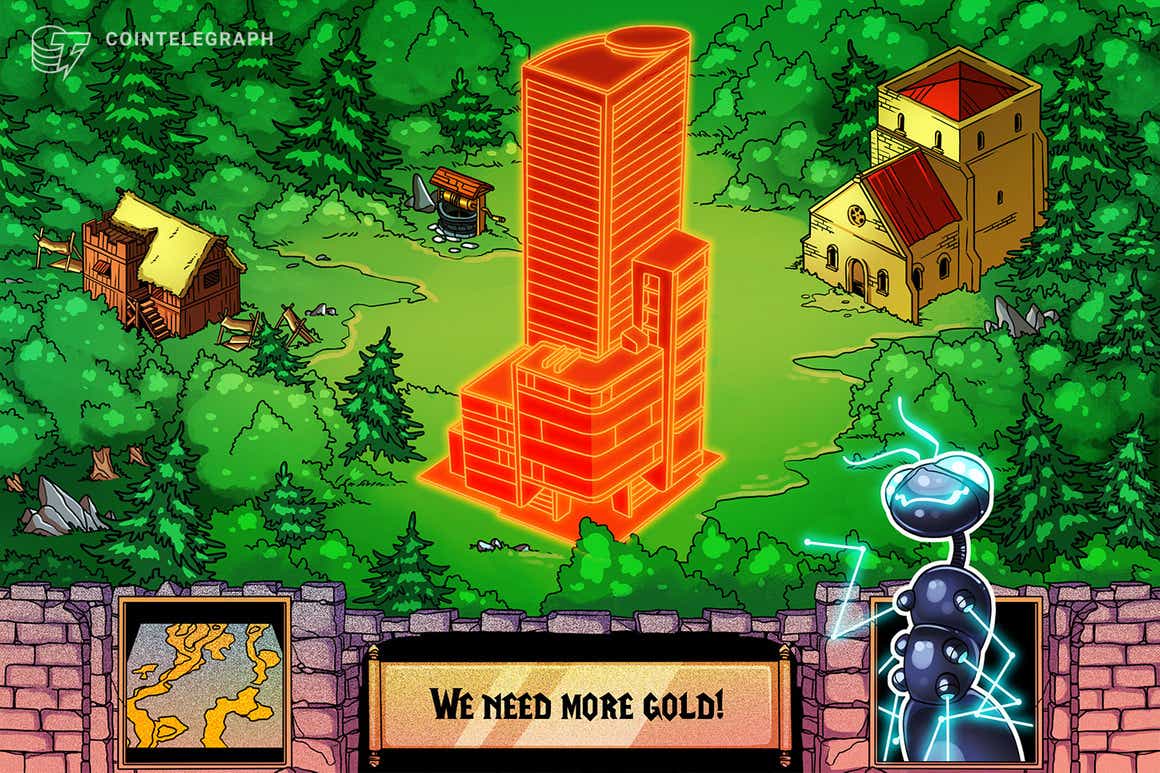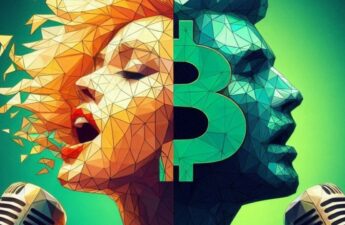The first computer games were developed in the late 20th century with the sole purpose of entertaining their audience. One of the first goals was to distract players from their routine work and provide them access to a fantasy world. Very soon, games began to compete for users’ time against traditional forms of entertainment, such as movies, circuses, theater performances, zoos, etc.
Planet Earth entered the new millennium with a population of over 6 billion people, and the forecast is that this number will reach 8 billion as early as 2023. If we assume that computer games will cease to be an alternative to work and become complementary to it, there will be 4 billion gamers in the world by then.
Not surprisingly, the traditional boundaries between games, media, sports and communication are rapidly disappearing, creating new business partnerships and causing more and more mergers and acquisitions around the world.
The still-active virtual world Second Life, which represented a first attempt at a portal to the metaverse with its own in-platform virtual currency, was an important example of this process between 2003 and 2006, during its most rapid period of growth. Players in many countries quit their jobs and dedicated 100% of their time to the virtual world.
But why is the use of blockchain in games causing a real revolution in the gaming industry? That is what this article seeks to answer.
The gaming markets
According to data from mid-2021, there were 3.2 billion people playing computer games, and as a report by Newzoo states, the global gaming revenues in 2021 were about $180.3 billion — 20% more than before the pandemic began in 2019.
Digital distribution channels are responsible for most of this revenue. Mobile games act as the main growth engine for the games industry, driving this segment to $93.2 billion dollars.
The game development industry has experienced a profound transformation over the past five years. With the emergence of mobile app stores and digital distribution platforms, even smaller studios have gained the ability to create games for the global market.

China remains the largest regional segment in terms of both revenue and number of players, accounting for more than a quarter of all sales. The Asia-Pacific region as a whole holds 55% of all players and offers the highest profits and fastest growth rates.
The introduction of new technologies, such as artificial intelligence (AI), virtual reality (VR) and blockchain, has become a major trend in the market. In recent years, numerous blockchain-enabled gaming apps and services have emerged, and the number of such projects promises to cause a boom in the market by 2022.
The evolution of business models in the games industry
Pay-to-play (P2P) model
From the 1970s until the 2000s, the most prevalent business model for the games industry was “pay-to-play.” In this model, development studios and publishers generate revenue from initial game sales and, in some cases, subscriptions. Collaborations with advertisers for in-game ads were few and far between.
In this model, players have little or no opportunity to extract value from games, except the satisfaction and enjoyment gained from the in-game experience.
Free-to-play (F2P) model
In the late 2000s and early 2010s, the “free-to-play” gaming model gained traction. This model was once considered a disastrous business model that would, at best, bring in lower revenues for a given game and, at worst, cannibalize the entire gaming industry. However, it has instead proven to be the best way to monetize, as well as being a main reason behind the cultural rise of games.
In the free-to-play model, games are offered to players at no upfront cost. In this type of model, in-game purchases (items and upgrades that improve features in the game) and ads make up the vast majority of the publishing studios’ revenues. Streaming and esports services act as monetization levers for players, while allowing “elite” players to receive rewards.
A perfect example of how some of these free-to-play business models have become successful is Fortnite. The game, launched in July 2017, generated over $5 billion in revenue in its first year of production. In addition, its userbase climbed to approximately 80 million monthly active users in 2018.
Play-to-earn (P2E) model
The “play-to-earn” model is exactly what the name suggests: A model where users can play and earn tokens or crypto while playing. This model has a very powerful psychological incentive, because it combines two activities that have driven humanity since the beginning of time: reward and entertainment.
The main idea in P2E is that players are rewarded as they invest more time and more effort in the game, and thus become part of the in-game economy (tokenomics), creating value for themselves, for other participants in the game ecosystem, and also for the developers. They receive an incentive/reward for their participation and playing time in the form of digital assets with potential appreciation over time.
Note that the use of blockchain technology in such assets has brought scarcity to digital assets in games, which can take the form of NFTs and can represent absolutely anything from characters like the kittens in CryptoKitties to cryptocurrencies like Bitcoin (BTC) or Ether (ETH).
Related: The Metaverse, play-to-earn and the new economic model of gaming
Along these lines, the key component in this model is to give players “ownership” over certain “digital assets” in the game, allowing them to increase their value by actively participating. This is where blockchain technology has become decisive for gaming business models.

Many concepts come from traditional games
The blockchain-based gaming industry is still in its early stages and it is still centered around many concepts coming from traditional gaming. NBA Top Shot, for example, is building on the “collect and trade model” that has prevailed in baseball cards and other collectibles for decades.
Axie Infinity, currently the most famous blockchain-based game, uses the “breed and battle” game model that Pokémon launched in the 1990s.
Related: How blockchain technology might bring triple-A games to metaverses
Sorare, on the other hand, a game in which players buy and trade soccer cards and build competing soccer teams, is based on the “recruit and compete” model. Similarly, virtual worlds like Decentraland and Somnium Space are immersing people in alternative realities, like Second Life and The Sims before them.
Thus, although many games that use blockchain technology (such as The Sandbox, Gods Unchained and Star Atlas) often fall into the same categories as games that do not use such technology, the most important feature that distinguishes them from their counterparts in the traditional market is the use of blockchain-based cryptocurrency support.
Overview of blockchain gaming
Advantages of blockchain games for players
With the introduction of blockchain technology, native game assets go to global, non-permitted blockchain platforms, rather than being tied up and locked in the particular game’s platform or in local environments controlled by video game development companies. We’ve talked about this before, when we covered the role of blockchain in NFTs in this column.
Here, it is important to highlight how blockchain technology has enabled digital assets, such as nonfungible tokens, to be interoperable and immediately viewable across dozens of different wallet providers, tradable on other gaming platforms and required in various virtual worlds of the Metaverse. And interoperability, in turn, has extended the negotiability of digital assets by enabling their free trade on other gaming platforms, thanks to blockchain technology. This puts users in direct ownership of their in-game items, giving them full and irrevocable control over their use.
That is, blockchain game players can access NFT marketplaces and crypto-active brokers and extract value from their in-game experiences by buying and trading digital assets obtained in games, 24/7, globally. In addition, tokenization of in-game assets opens up numerous other opportunities.
Related: Ready Player Earn: Where NFT gaming and the virtual economy coincide
The decentralized finance marketplace is a place where some players can put their acquired in-game assets to yield. Platforms like Yield Guild Games facilitate, for example, the lending and borrowing activities of in-game assets, so that players who do not have the initial capital needed to purchase in-game items can, through DeFi, participate in a given game by ceding a portion of the monetization and their earnings to “in-game item lenders.”
The advantage of blockchain games for developers
In addition to increasing monetization opportunities for gamers, the use of blockchain-based assets can also be beneficial for game developers.
Under the current structure of in-game item exchange, the practice known as “gold mining” has become prevalent. Gold mining involves players selling accounts or game “coins” on dark markets or over-the-counter markets, limiting secondary market monetization opportunities for developers and making players vulnerable to fraud.
With the expansion of marketplaces for digital assets obtained in blockchain games, developers can obtain information about the trading volumes of these assets and encode royalties into NFTs, so that with each subsequent sale, they receive a portion of the sale price as a royalty fee. This represents a real evolution in the way intellectual property and copyrights are thought of in the digital world.
The game industry and the property dispute
Games that use blockchain are fundamentally different from traditional games because of the way they approach ownership. Blockchain games give players full control over the digital assets they earn or acquire through their participation in the games.
In traditional games, even though players pay real money for their digital assets, they can no longer access them if the server is down. That is, in traditional games, the money and assets remain the property of the publisher or developer.
Ultimately, blockchain game players retain full ownership of their digital assets, allowing them to trade them freely with other players, sell them for real money, and potentially use them in other games or virtual worlds in the Metaverse.
Related: Nonfungible tokens from a legal perspective
The trend in the games industry is towards the adoption of blockchain in games as a path of no return, and at the moment, the P2E model is the driver of this adoption. However, over time, the use of blockchain in games will likely span a variety of use cases beyond the play-to-earn model. This is because the technology enables a myriad of combinations and incentives.
Against this backdrop, it’s no wonder that, in the last four months alone, hundreds of millions of dollars have flowed into blockchain or NFT-centric games, with investors allocating large amounts of funds to startups that, in turn, are looking for expert developers to build their teams.
Parallel to this, governments are already considering taxing the profits made by the more than two million players of Axie Infinity, currently the most popular game on blockchain and using the P2E model.
What about you? Would you invest your time to compete and be rewarded with digital assets in a game, including it as work experience on your resume?
This article does not contain investment advice or recommendations. Every investment and trading move involves risk, and readers should conduct their own research when making a decision.
The views, thoughts and opinions expressed here are the author’s alone and do not necessarily reflect or represent the views and opinions of Cointelegraph.
Tatiana Revoredo is a founding member of the Oxford Blockchain Foundation and is a strategist in blockchain at Saïd Business School at the University of Oxford. Additionally, she is an expert in blockchain business applications at the Massachusetts Institute of Technology and is the chief strategy officer of The Global Strategy. Tatiana has been invited by the European Parliament to the Intercontinental Blockchain Conference and was invited by the Brazilian parliament to the public hearing on Bill 2303/2015. She is the author of two books: Blockchain: Tudo O Que Você Precisa Saber and Cryptocurrencies in the International Scenario: What Is the Position of Central Banks, Governments and Authorities About Cryptocurrencies?
Source: https://cointelegraph.com/news/blockchain-and-the-evolution-of-business-models-in-the-game-industry


